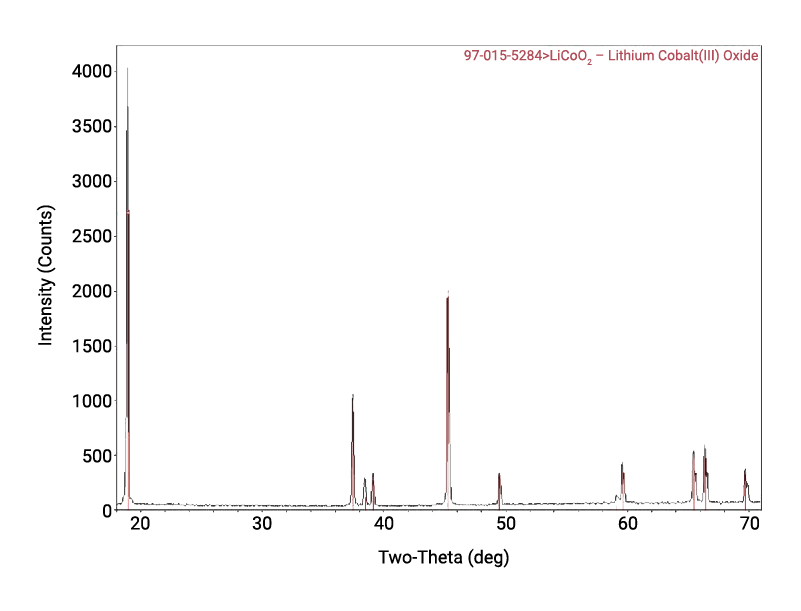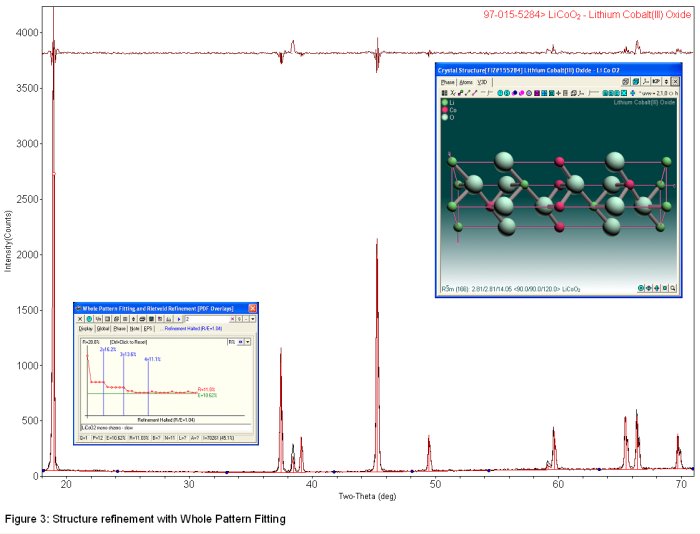Background
Materials Science has become an essential part of both industrial and academic research. At today's universities the education of future material scientists is essential to help further on going technological advancement. As part of this course of study hands on experience with IR, Raman, TEM, SEM and XRD measurement techniques is important in teaching students the skills required for the analysis of advanced materials. The MiniFlex benchtop XRD system is an easy-to-use, cost-effective way to bring XRD experiments into the teaching laboratory. For example, Lithium Cobalt Oxide (LiCoO₂) is known for its electrochemical properties.
Application
A popular application for this complex is in batteries. The material's performance in batteries depends on many properties. After chemical synthesis in the materials science or inorganic lab course, the target material can be easily characterized using the MiniFlex. The material can be identified from a pre-existing database (Figure 1), have its crystallinity calculated (Figure 2), or even its exact molecular structure refined (Figure 3).



Since the MiniFlex is portable, easy to use, and plugs into a standard 110/120V line it can be moved from lab to lab, class to class easily....perhaps even with a quick stop at the instructors home office for the development of some additional course work. (Figure 4).

